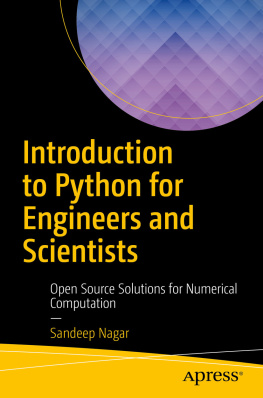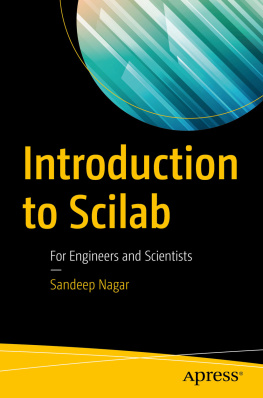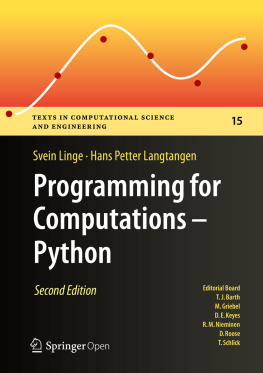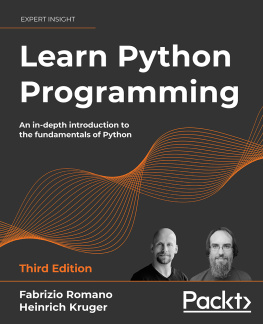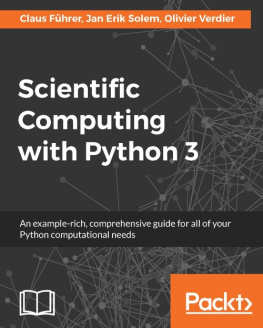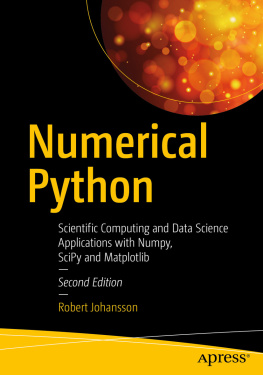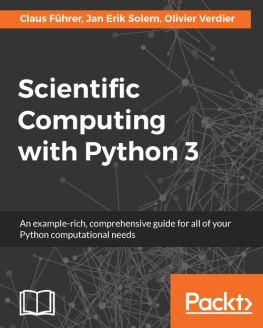Sandeep Nagar - Introduction to Python for Engineers and Scientists: Open Source Solutions for Numerical Computation
Here you can read online Sandeep Nagar - Introduction to Python for Engineers and Scientists: Open Source Solutions for Numerical Computation full text of the book (entire story) in english for free. Download pdf and epub, get meaning, cover and reviews about this ebook. year: 2017, publisher: Apress, genre: Computer. Description of the work, (preface) as well as reviews are available. Best literature library LitArk.com created for fans of good reading and offers a wide selection of genres:
Romance novel
Science fiction
Adventure
Detective
Science
History
Home and family
Prose
Art
Politics
Computer
Non-fiction
Religion
Business
Children
Humor
Choose a favorite category and find really read worthwhile books. Enjoy immersion in the world of imagination, feel the emotions of the characters or learn something new for yourself, make an fascinating discovery.
- Book:Introduction to Python for Engineers and Scientists: Open Source Solutions for Numerical Computation
- Author:
- Publisher:Apress
- Genre:
- Year:2017
- Rating:5 / 5
- Favourites:Add to favourites
- Your mark:
Introduction to Python for Engineers and Scientists: Open Source Solutions for Numerical Computation: summary, description and annotation
We offer to read an annotation, description, summary or preface (depends on what the author of the book "Introduction to Python for Engineers and Scientists: Open Source Solutions for Numerical Computation" wrote himself). If you haven't found the necessary information about the book — write in the comments, we will try to find it.
Familiarize yourself with the basics of Python for engineering and scientific computations using this concise, practical tutorial that is focused on writing code to learn concepts. Introduction to Python is useful for industry engineers, researchers, and students who are looking for open-source solutions for numerical computation.
In this book you will learn by doing, avoiding technical jargon, which makes the concepts easy to learn. First youll see how to run basic calculations, absorbing technical complexities incrementally as you progress toward advanced topics. Throughout, the language is kept simple to ensure that readers at all levels can grasp the concepts.
What Youll Learn
- Understand the fundamentals of the Python programming language
- Apply Python to numerical computational programming projects in engineering and science
- Discover the Pythonic way of life
- Apply data types, operators, and arrays
- Carry out plotting for visualization
- Work with functions and loops
Who This Book Is For
Engineers, scientists, researchers, and students who are new to Python. Some prior programming experience would be helpful but not required.
Sandeep Nagar: author's other books
Who wrote Introduction to Python for Engineers and Scientists: Open Source Solutions for Numerical Computation? Find out the surname, the name of the author of the book and a list of all author's works by series.

